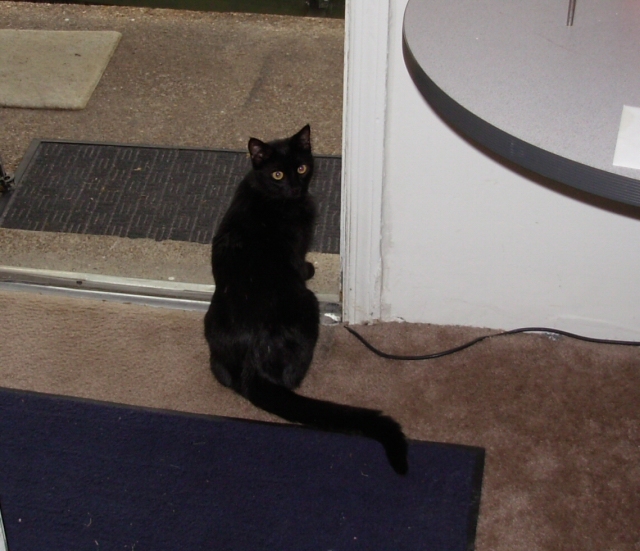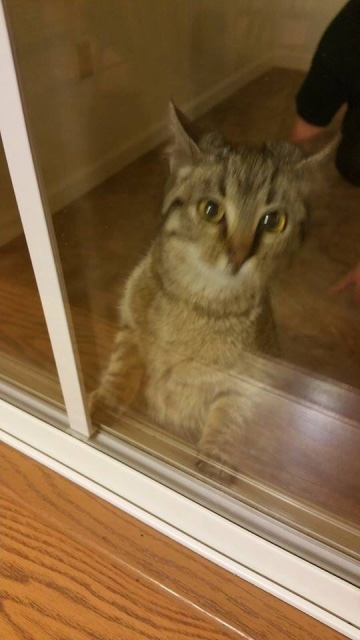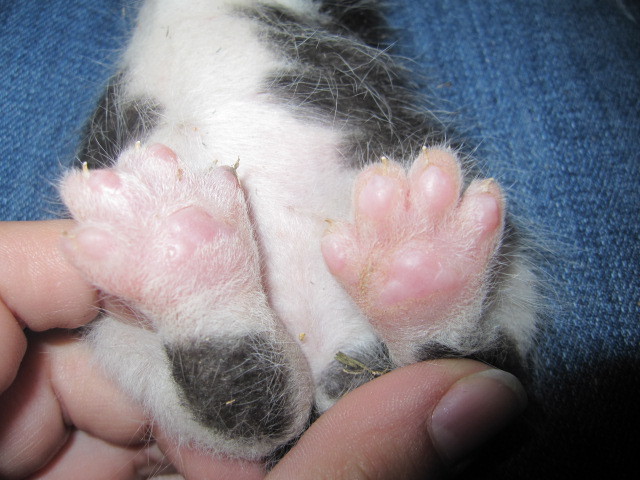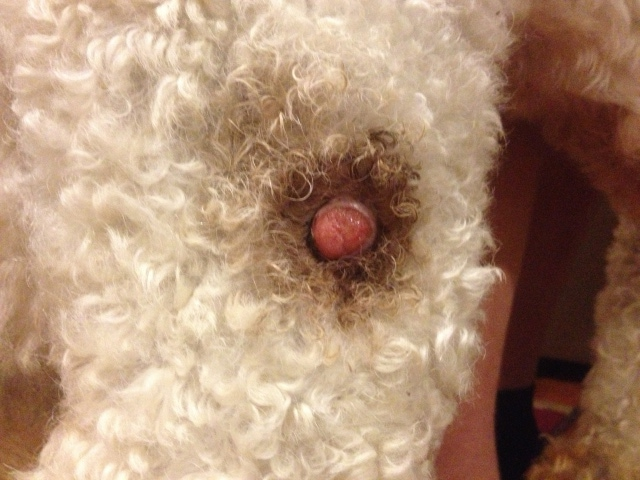QuestionMy cat is 8 months old and an indoor cat. She got out and bit a lady. The lady is worried about rabees and I wanted to know what I could do. My cat got her mandatory shots in January. I have been bitten while playing with her and nothing has ever happened to me. The lady needs the shot records but the place that we got them done at closed down 3 months ago. Can you tell me any advise about cats and rabees that would help?
AnswerHi Erica!
--1. All rabid animals foam at the mouth and act mad.
FALSE.
The truth is that rabid animals can appear calm and sociable, you really can't tell if an animal is infected until it starts to exhibit symptoms. Foaming at the mouth only happens SOMETIMES and not until the later stages of the infection.
--2. Cats get rabies more than dogs do.
TRUE.
In the 1980s and 1990s, cats suffered infection of rabies MORE than dogs did, partly because of the strict vaccination laws that exist for dogs and not for cats. Also, cats have a roaming and territorial nature, which exposes them to wildlife like skunks and rabbits and raccoons.
--3. Your indoor only cat does not need to get rabies shots.
FALSE.
Even indoor cats can get infected with rabies and should get the vaccination. No matter how diligent you are, your cat could slip out into the great outdoors. Bats and mice can still get into your house and we all know that cats can't resist a moving target.
--4. Vaccinating your cat can cause cancer later on in life.
FALSE.
The chances of your cat developing cancer are extremely low, compared to the death rate from rabies. This makes vacation worth the risk. 1 in 100 cats can develop sarcoma, an extremely treatable cancer.
--5. Humans exposed to rabies will be expected to receive a very painful regimen of 20 shots of vaccine in the stomach.
FALSE.
Once upon a time, this was the route that needed to be taken.
The new vaccination takes only 6 shots over a 28-day period
and is done in the arm. This makes the process painless and
easier to administer.
--What can you as a responsible pet owner do?
One sure way to help stop the spread of rabies is to be diligent about having your cats and dogs vaccinated. Even the scare of an epidemic can cause panic in some foreign countries and mass slaughter of non-infected animals can occur.
It is estimated that 85 percent of animal rabies occur in wild animals like bats, raccoons, skunks, coyotes, and foxes. Rabies can also be transmitted to farm animals such as cows,
horses, pigs, goats and sheep.
Remember, even if you have an indoor only cats, you need to have them vaccinated. You should also have all your pets vaccinated for this deadly disease. (Your snakes, birds, and obviously fish are exempt, as are your other non-mammal critters.)
Rabies Scare Causes Undue Panic About Cats
Rabies is an acute viral infection of the central nervous system and has been around for centuries. The United States has a very efficient public health system that has kept rabies in humans down to a minimum. Humans have access to post-exposure treatment for prevention; and for domestic animals we have an excellent preventive system for the animals (dogs) who used to be the prime carriers. The control of rabies in wild animals has relied on culling animals to reduce their numbers. These methods are not only inhumane, but also ineffective, as the ecological vacuum created is soon filled by other animals, who may not be as healthy.
A panic broke out recently in Rockland County, New York, when four kittens at the Hudson Valley Humane SPCA were found to have rabies. This was the first case of rabies reported at the shelter since 1891. The Department of Health's initial reaction was to rule that all stray cats brought into the shelter would have to be held for six months before being adopted. The press added to the panic by printing headlines such as, "More cats suffering from diseases!" and "Owners heartsick as pets are stricken with feline AIDS, leukemia and rabies."
The sensation caused many owners to give up their cats, even those who were strictly kept indoors. One man whose kitten became ill suspected she had rabies and had her euthanized. Yet the rabies test proved negative. A blood test showed she had feline immunodeficiency virus (FIV), which is not transmissible to humans, and cats can live with for many years.
To help put an end to the panic, Alley Cat Allies prepared a media release and fact sheet on rabies. If you have a rabies scare in your neighborhood, ask your local media to contact ACA for the facts.
Many innocent animal lives are lost as a result of our own fear and ignorance. There is a sane and sensible way to deal with rabies, as well as other diseases, as long as you understand the facts and take the proper precautions.
According to the latest U. S. rabies figures from the Centers for Disease Control, rabies remains a disease of wild animals. Over 92% of all animals infected with rabies from 1991 through 1995 have been wild. Overall there was a decline in rabies from 1994 by 4.24%, mostly due to the 17.1% decrease in recorded cases of raccoon rabies in the Northeast where rabies in now enzootic rather than epizootic (prevalent but not an epidemic.)
In 1995, four humans died of rabies, all caused by bat viral variants. None of the humans had noticeable bites, following a similar pattern seen during the past few decades. Forty-seven of the 48 contiguous states had reported cases of rabies in bats. If you ever come in contact with a downed bat, the bat should be tested for rabies, or held in quarantine by a veterinarian or wildlife rehabilitator.
Trials of the recombinant rabies vaccine, where the vaccine is placed in baits for ingestion by raccoons, continue in Massachusetts, New York State, Cape May (New Jersey), and Florida.
One of the greatest problems in rabies transmission is the relocation of wild animals from one area to another, usually for hunting purposes, as we saw in the raccoons transferred from Florida to West Virginia, which caused the recent rabies epidemic in the Northeast. Animals in Florida, Montana, and Alabama have been found to have rabies variants previously found only in Texas.
I would highly recommend that you search your house for your cat's vaccination records.If you can't find them,contact any vet in your area and explain to him your dilemma.It is very immportant you are sure your kitty is updated on vaccination.
The first rabie should be given at 12 weeks of age.The second rabie vaccination should be given at the age of 64 weeks.Then he should be revaccinated intervally at the age of 12 or 36 months.
I hope this has been helpful and I wish you the best of luck!Please keep me posted and give that kitty cat millions of kisses for me!Sending wagging tails your way!
Nicole

 Excessive Consumption
Question
Tiny - About 12 months
Hello,
Background:
I h
Excessive Consumption
Question
Tiny - About 12 months
Hello,
Background:
I h
 Cat breed, safe for family?
Question
The kitten
I found a kitten a couple da
Cat breed, safe for family?
Question
The kitten
I found a kitten a couple da
 baby kitten w/ all 4 swollen paws
Question
Her back feet
okay... I have 2 young cat
baby kitten w/ all 4 swollen paws
Question
Her back feet
okay... I have 2 young cat
 My dogs chronic ear allergy infections
Question
Hiedi
My dog whom is three years now-part Aust
My dogs chronic ear allergy infections
Question
Hiedi
My dog whom is three years now-part Aust
 Growth on standard poodle rear leg
Question
Standard poodle growth
Hello,
My female
Growth on standard poodle rear leg
Question
Standard poodle growth
Hello,
My female